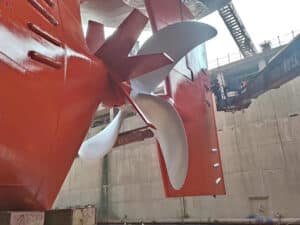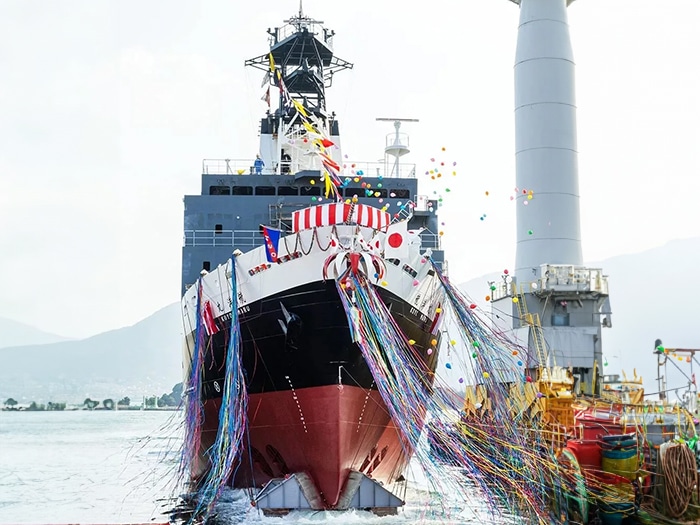
Mitsubishi Shipbuilding launches new salvage tug
Written by Nick Blenkey
New salvage tug Koyo Maru has a semi-vertical stem to improve propulsion performance. [Photo:Mitsubishi Shipbuilding]
With conditions in the international marine salvage industry remaining challenging, orders for purpose-built salvage tugs have been somewhat scarce in recent years. Today, though, Mitsubishi Shipbuilding Co., Ltd., a Mitsubishi Heavy Industries (MHI) Group company based in Yokohama, today held a christening and launch ceremony for a new salvage tug currently being built for Nippon Salvage Co., Ltd.
The ceremony took place at the Enoura Plant of MHI’s Shimonoseki Shipyard & Machinery Works in Yamaguchi Prefecture. The vessel, the Koyo Maru, is scheduled for handover to Nippon Salvage in June 2024 following completion of outfitting work and sea trials.
The vessel has a length overall (LOA) of 80.6 meters and beam of 15.5 meters, with gross tonnage of approximately 3,000. It will replace the current Koyo Maru, originally constructed at MHI’s Shimonoseki Shipyard & Machinery Works, and which has been in continuous service since 1998. The new vessel has one of the highest pulling capacities (bollard pulls) in Japan to respond to large-scale marine accidents, while optimal placement of fire extinguishing equipment such as water cannons, and improved fixed-point holding capacity, provide enhanced efficiency when firefighting on other ships.
The new Koyo Maru salvage tug is equipped with a selective catalytic reduction (SCR) system to comply with environmental regulations, allowing it to operate in designated areas where nitrogen oxide (NOx) emissions are restricted, such as the coastal waters of the United States and Canada, the North Sea, and the Baltic Sea.
Additionally, the salvage tug utilizes a new hull form (semi-vertical stem) to improve propulsion performance, and has been designed to allow temporary equipment such as remotely operated vehicles (ROVs) to be mounted on the exposed deck as necessary, improving workability.
Private rooms for supervisors have also been provided to improve livability.




